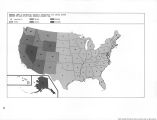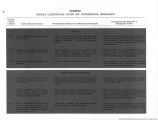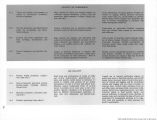| OCR Text |
Show Users as a class have many interests. They want equal opportunity for access to public lands and resources in which they are interested, and equal treatment in their relations with the Federal Government and with other users. They are interested in having a voice in decisionmaking from the time that plans are made for general use through the chain of events that may involve decisions affecting their particular uses. In this latter connection, of course, all users desire prompt and fair consideration of disputes with public land administrators. National Public State & Local Gov't. Users Federal Proprietor Federal Sovereign Regional Public All users are interested in having the terms and conditions under which use will take place specifically stated in advance. Although such need is not always recognized by those who use the public lands for noneconomic purposes, we believe it has significance and should be taken into consideration by all users. In addition, all users desire a minimum of interference by the landowner, i.e., the Federal Government, in the manner in which the public lands are used. Users also have a justifiable interest in seeking pricing and other conditions competitive with the use of other lands, together with security of investment, usually through assured tenure of use. As a corollary, they expect to be compensated if their use is disrupted or interfered with before the expiration of the term of the lease or permit of use. Summary We believe that it is in the public interest to encourage the highest and best use of the public lands to the end that they contribute the most in social and economic values. As national resources, they have little value unless their values are made available for the use of our people, either in Federal or non-Federal ownership. Our efforts to find a formula for the maximum benefit for the general public are in response to that belief. The Commission believes that the maximum benefit for the general public can most nearly be ascertained after a careful consideration and weighing of the impacts on the interests of the six categories we have identified and discussed in this chapter. In establishing guidelines to determine whether lands should be retained and managed or disposed of, we are in search of the means of accomplishing the task rather than the end result. The end result, of course, is to achieve the maximum benefit for the general public and it is for that reason that we have focused so much of our attention on seeking criteria to assist in that determination. We could find no better way to perform our complex task, and, having found it helpful, we recommend its use in future public land decisionmaking. 38 |







































































































































































































































































































































































